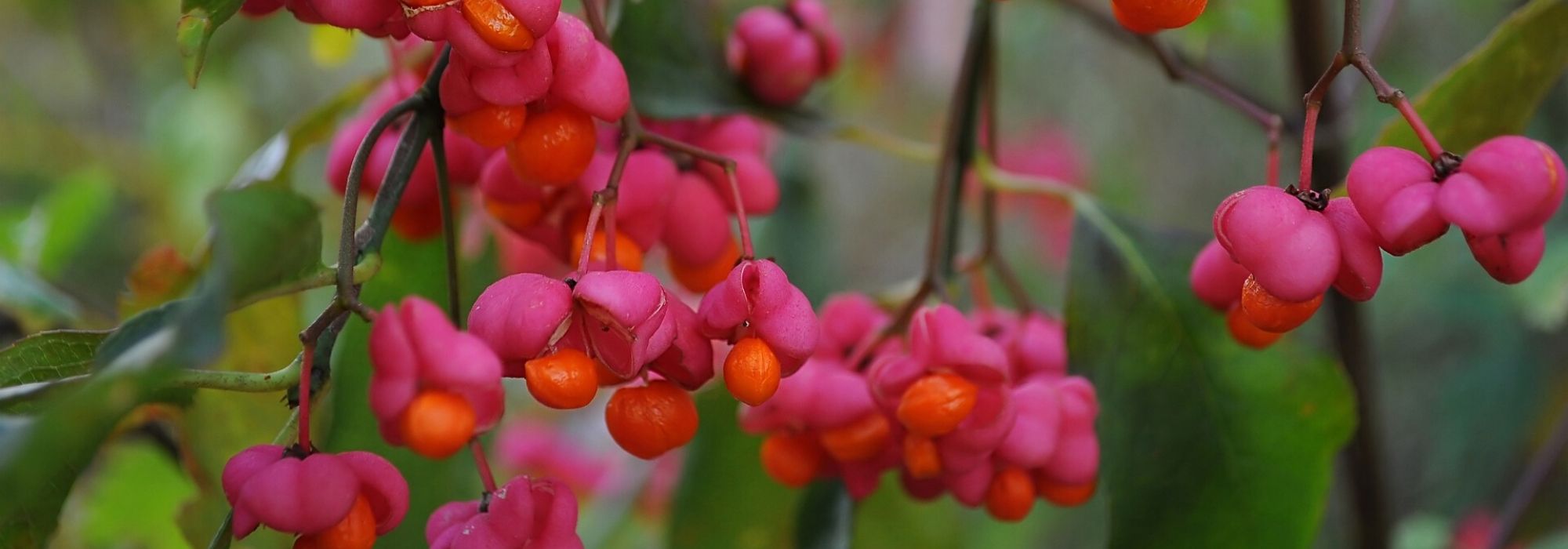
Spindle: which variety to choose?
Our guide to find the variety best suited to your garden
Contents
Ornamental bush, euonymus, whether it has evergreen foliage or not, is one of the woody plants particularly decorative thanks to its berries and some of the most beautiful autumn colours. Japonicus, fortunei, or europeus, it can be used across much of the territory and lets you play with the multitude of foliage and colours it offers.
Spindles, or Euonymus by their Latin name, are evergreen or deciduous bushes that are highly decorative, distinguished by their wide range of evergreen foliage, their superb autumn colours, and their numerous berries that attract birds through winter. Very recognisable by their glossy, finely dentate foliage, they present very varied habits depending on variety: bushy, creeping or climbing. Found in our gardens and green spaces where they are often confined as hedge plants, they actually have many other uses in a garden. Hardy, undemanding, resistant to sea spray and urban pollution, not afraid of frost, adaptable to shady or sunny positions, they prove to be all-round plants. They can serve as border plants, groundcover, and even as an alternative to boxwood…
Hesitating between the many varieties of this beautiful bush? Here are some tips to choose the right euonymus for the right place!
Deciduous spindle trees: superb fruiting and autumn colour
One of Euonymus’s great attractions is its magnificent autumn colours, which set the deciduous foliage alight in a flamboyant display at the first frosts. As such, it is a very attractive bush to brighten and enliven the garden in autumn. Warm tones of yellow, orange, bright red and purple enhance the deciduous varieties, such as Euonymus alatus and European spindle (Euonymus europaeus). In a naturalised border, Euonymus alatus can rival Japanese maples for autumn colour!
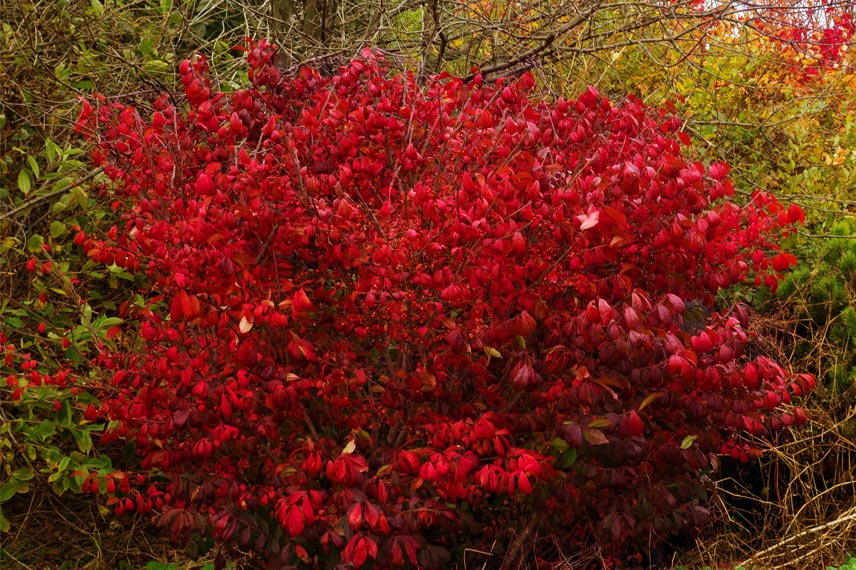
Winged spindle (Euonymus alatus Compactus) turns bright red in autumn.
Fruits also play a part in the show, not only adorning the garden in winter with their warm colours but also providing birds with plentiful berries for the cold season. The Euonymus grandiflorus ‘Red Wine’ semi-evergreen has arching branches and remarkable purplish-violet autumn foliage, followed by large fruits tinged with orange that contrast beautifully with the foliage in autumn. Warning: fruits are highly poisonous on all cultivars.
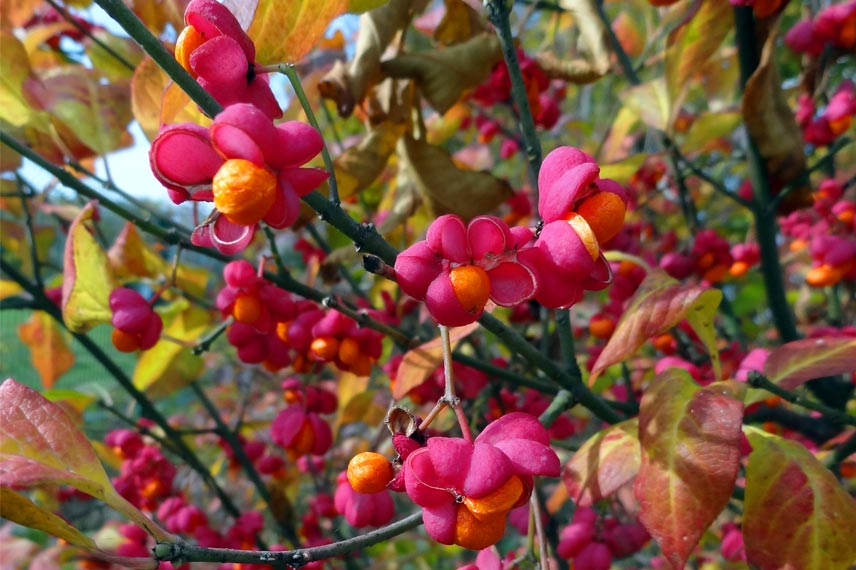
Fruits contribute to ornamental appeal of spindles (here those of the European spindle: Euonymus europaeus).
Variegated and golden spindle trees: let there be light!
Spindle is second to none at bringing brightness to a border or lighting up a courtyard. Variegated varieties in cream or yellow, even almost golden, will instantly brighten spots that are a little too dull!
Euonymus fortunei ‘Emerald’n Gold’ with green foliage margined with a bright yellow will provide striking illumination, ideal in low hedges, rockeries or planters thanks to its low habit (40 cm in height). Euonymus japonicus Aureomarginatus is particularly luminous for planting in a border or as a specimen, thanks to foliage edged with a golden yellow.
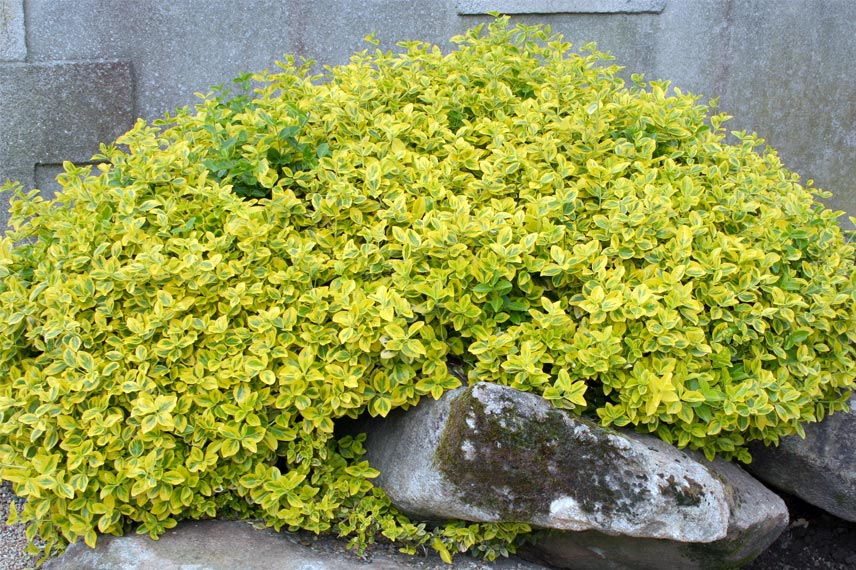
Golden foliage of Euonymus fortunei Emerald’n Gold.
You can also opt for the very handsome Euonymus japonicus ‘Bravo’, variegated green and cream, very compact for use either in a border or an informal hedge.
If original colours appeal to you, choose the stunning Euonymus fortunei ‘Harlequin’, literally speckled with white, very original and suitable for many uses.
Note: variegated varieties always require a little light to maintain the beauty of their foliage.
Discover other Euonymus - Spindle tree
View all →Available in 3 sizes
Available in 3 sizes
Available in 4 sizes
Available in 2 sizes
Available in 2 sizes
Available in 2 sizes
Available in 1 sizes
Available in 2 sizes
Available in 2 sizes
Available in 2 sizes
Evergreen Euonymus: the star of hedges
Bush perfectly suited to pruning, spindle in its evergreen forms is ideal for forming decorative hedges year-round. It can be integrated into a mixed hedge, or used to create a monospecific hedge (composed of a single species or variety). The Japanese spindle (Euonymus japonicus) is best suited to this use, owing to its very dense, compact bush habit (it measures around 3 to 5 m across). With a very classic appearance once pruned, Japanese spindle variety ‘Bravo’ will form an immaculate, variegated natural hedge.
Spindle also fits equally well into a natural garden if left unpruned, and will then form a charming country hedgerow in a rural garden. Whether combined with deciduous bushes or not, Euonymus japonicus ‘Président Gauthier’, with its slow growth, lends itself to this type of natural hedge, also with variegated colouring.
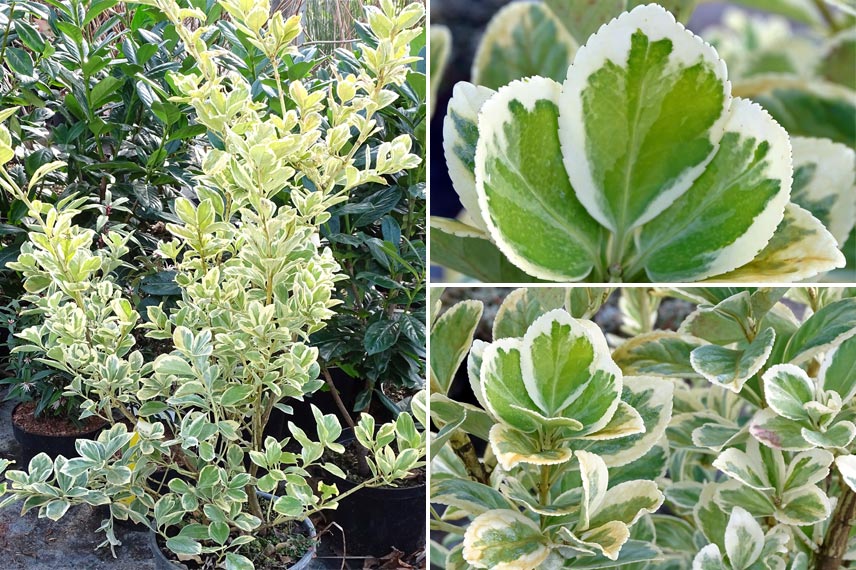
Bright foliage of Euonymus Président Gauthier
→ Discover other Spindles for hedging in our advice sheet
Euonymus with small leaves, or how to replace boxwood
Faced with attacks by the box tree moth that have been occurring for several years, several alternatives have been found to replace specimens that are too diseased: the small-leaved Japanese spindle, Euonymus japonicus ‘Microphyllus’, is one of the most interesting options as it is ideal for pruning and grows faster than boxwood, allowing quicker establishment. Its glossy dark green evergreen leaves closely resemble boxwood. It can be used to create small edgings or low hedges, and also makes an excellent subject for topiary (decorative pruning) as a ball in urns or pots on a terrace. It is therefore perfect for creating zen or Asian-style gardens because of its graphic form (cloud pruning is possible on an Euonymus japonicus, for example), for more classical French-style gardens, or to shape borders in a vegetable garden.
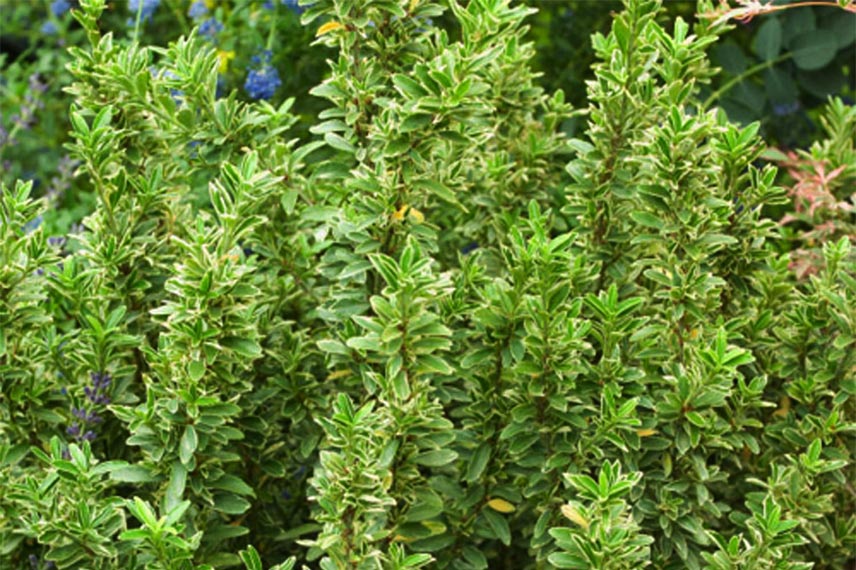
Small crowded leaves of Euonymus japonicus microphyllus Albovariegatus.
Creeping euonymus: excellent groundcovers
Euonymus has another significant asset as groundcover when chosen from one of its many low varieties, which grow to a height of 30 to 40 cm. It then forms a dense tapetum that is not bothered by competition relating to root and is therefore ideal beneath tree cover or for stabilising a bank, as with an evergreen Euonymus ‘Coloratus’ (Euonymus fortunei ‘Coloratus’): it has a very creeping habit which also colours purple in winter. This sprawling form can also be trained as an espalier to produce a climber up to 5 metres high! You can quickly cover a bank with Euonymus ‘Dart’s Blanket’, requiring no maintenance after planting. The groundcover function of Euonymus can finally be very nicely declinate on pots with Euonymus Turkestanicus.
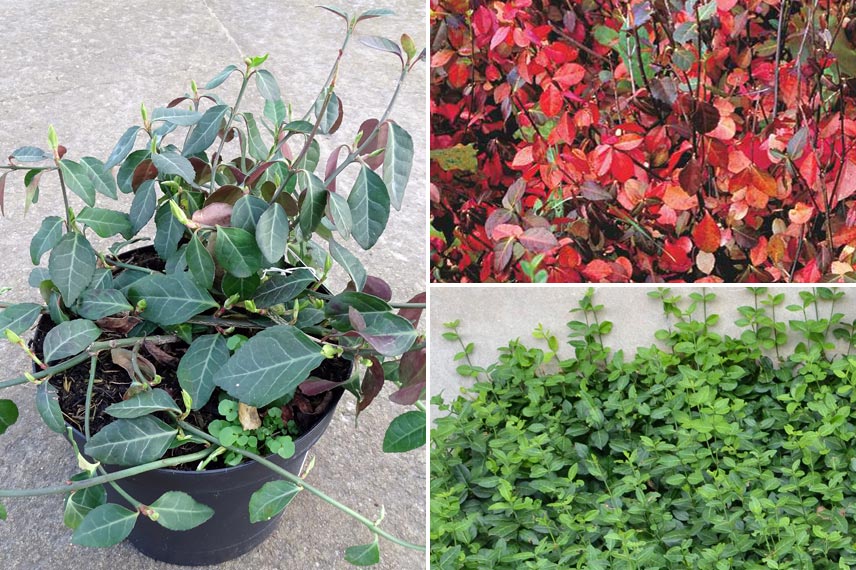
Different shades of Euonymus fortunei ‘Coloratus’ through the seasons.
Spindle trees with an upright habit for a distinctive look
Fastigiate-spindles (erect to columnar habit) are excellent choices when you want to showcase a bush as a specimen on a short grass meadow.
The winged spindle (Euonymus alatus) is a handsome deciduous bush with very decorative wood that deserves to be discovered: its upright silhouette is attractive and original. Placed as a specimen on a short grass meadow, or integrated into a natural hedge, autumn brings out its superb reddish to pink hues, while its orange fruits (arils) continue this fairy-tale display into winter. It particularly prefers calcareous soil, which helps enhance the brightness of its autumn colours. The variety ‘Compactus’, 1 m high, with deciduous foliage blazing red in autumn, is ideal if space is limited and adds a touch of originality and flamboyance to the garden!
The Spindle ‘Benkomasaki’, evergreen, is the spindle to choose if you want to introduce a touch of originality into the garden: with its branches remarkably held vertical, it brings a striking graphic element when creating topiary in a formal garden. It looks utterly contemporary planted in containers on a terrace, or combined in a border.
The Spindle ‘White Spire’ (Euonymus japonicus ‘White Spire’) is also a fine, particularly erect (fastigiate) specimen that surprises with its well-variegated foliage, marginate with cream-white around the oblong leaf margins.
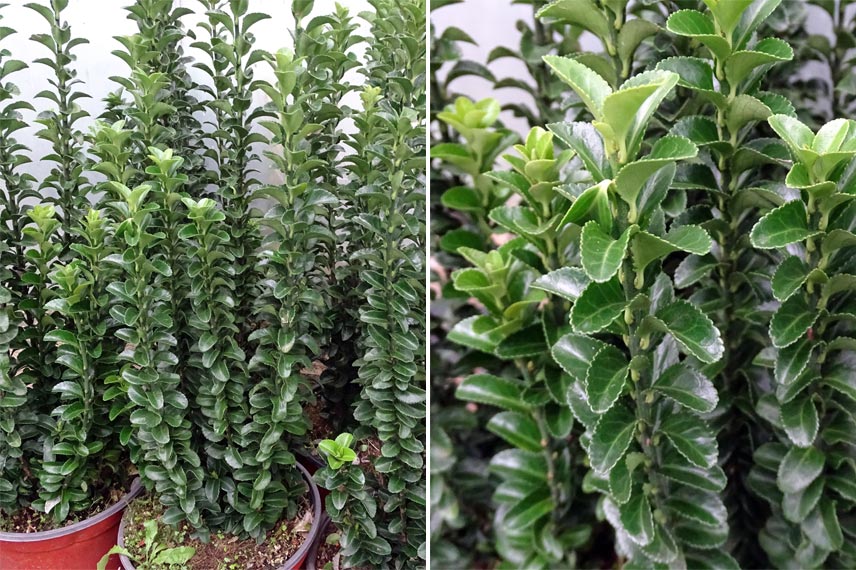
Upright foliage of Euonymus ‘Benkomasaki’.
- Subscribe!
- Contents
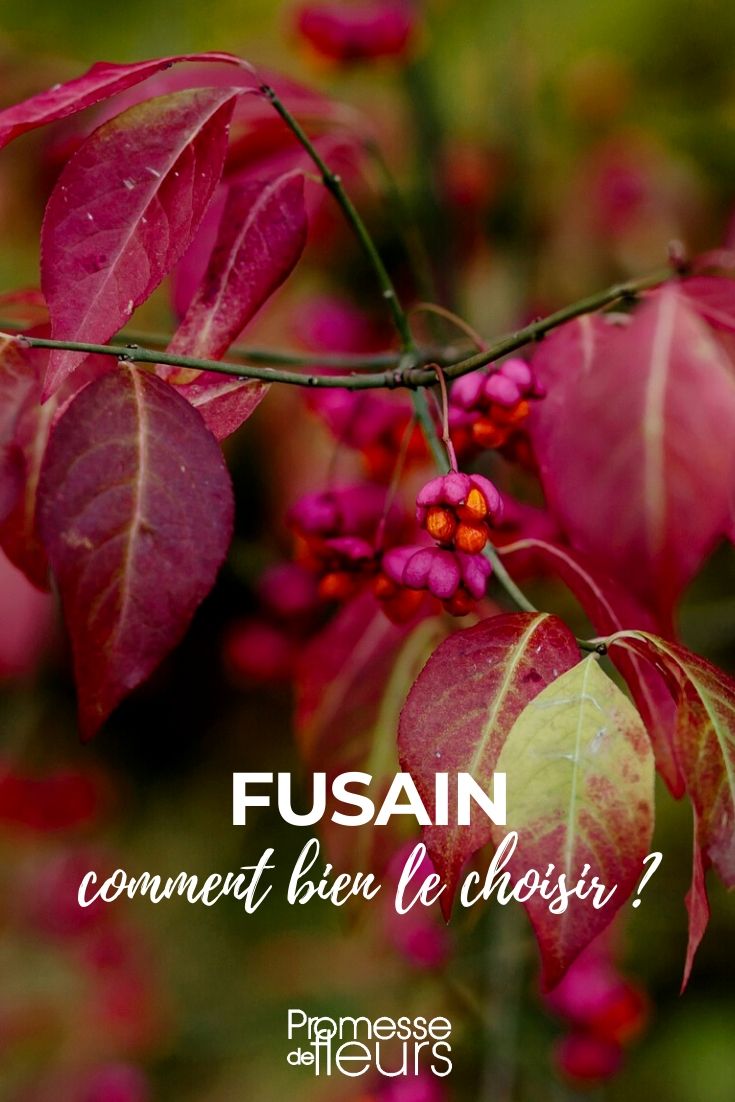
































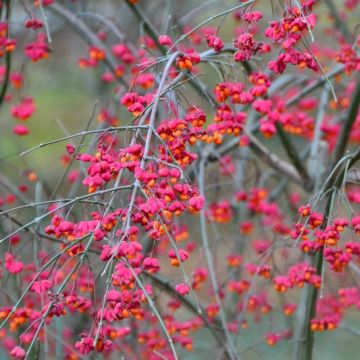



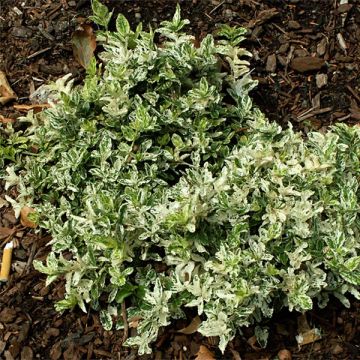
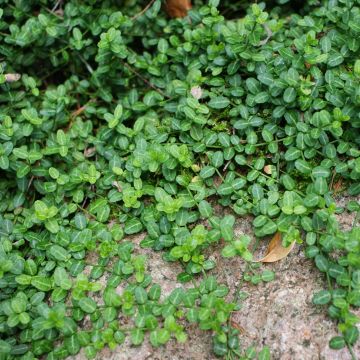



Comments